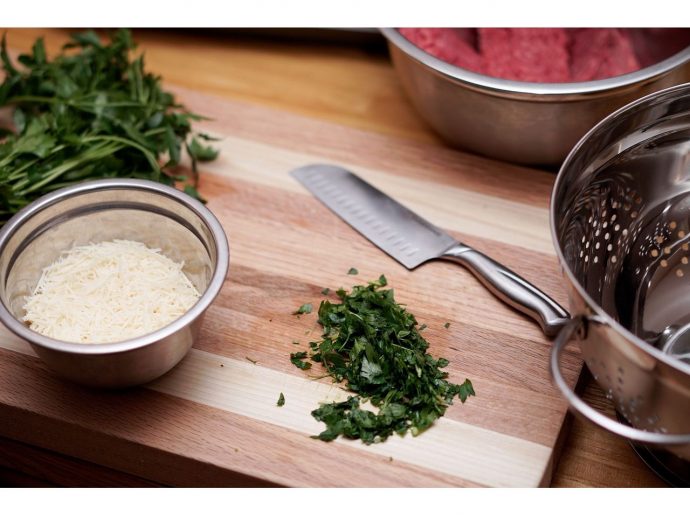Categories more
- Adventures (16)
- Arts / Collectables (15)
- Automotive (37)
- Aviation (11)
- Bath, Body, & Health (76)
- Children (6)
- Cigars / Spirits (32)
- Cuisine (16)
- Design/Architecture (21)
- Electronics (12)
- Entertainment (4)
- Event Planning (5)
- Fashion (44)
- Finance (9)
- Gifts / Misc (6)
- Home Decor (44)
- Jewelry (40)
- Pets (3)
- Philanthropy (1)
- Real Estate (14)
- Services (22)
- Sports / Golf (14)
- Vacation / Travel (60)
- Watches / Pens (14)
- Wines / Vines (24)
- Yachting / Boating (16)
How to choose the perfect cutting board for your kitchen — expert advice
Published
06/19/2025The importance of the right board
A cutting board is an essential tool in the kitchen. It’s what makes everyday tasks simpler and more practical. Picking the correct tool directly affects the cooking process, the sharpness of the blades & safety.
The role of the tool in preserving knives and hygiene
A cutting board is indispensable item in the kitchen. The standard of the material is essential — it determines how long your knives stay sharp and how clean the workspace and the tool itself remain.
The key factor is how the material interacts with the knife’s edge. If it’s too hard, it creates a sandpaper-like effect. As a result, the edge can become blunt quickly and lose its sharpness. This often happens with glass or stone products. A blunt knife is not only uncomfortable to use but also increases chance of getting hurt.
The second important aspect when choosing cutting boards for the kitchen is cleanliness. The issues of bacterial spread, cross-contamination & others remain highly relevant. In general, experts suggest having dedicated tools for specific food types — fish, meat, bread.
A properly chosen clean tool will ensure not only comfort but also your family’s health.
An impact on the cooking process
The quality of cooking and the enjoyment of the process often depend on the smallest details. The cutting board is no exception. The right tool will provide:
- Ergonomics (no slipping, comfortable size)
- Smooth knife movement (influences slicing speed and cut precision)
- A clean workspace (of drainage channels, anti-slip bases & other possible features).
Main materials
Modern products consist of different material types, offering distinct features, uses, and upkeep needs. Top choices include:
- Wood. Wooden boards are the most aesthetically pleasing of all. They are beautiful, safe, eco-friendly & have self-healing properties. It’s best to choose tools made of dense hardwoods — beech, maple, rubberwood. These boards offer many advantages. They:
- Don’t absorb food odors
- Don’t warp
- Don’t damage knives
- Are resistant to water and temperature changes
It’s important to remember that wooden products require maintenance. Don’t leave them soaking in water for long periods & treat them occasionally with wax or oil. Another downside may be the high cost of a quality board.
- Bamboo. This is another environmentally friendly option. These items don’t absorb odors, resist warping from temperature changes and moisture & have an appealing appearance. Bamboo boards last quite a long time. However, it’s worth noting that knives tend to dull a bit faster on them compared to regular wooden boards. Bamboo products are great for vegetables, fruits & bread, but they are also appropriate for handling fish and meat.
- Plastic. Plastic boards are the most practical and economical solution. They’re simple to wash, even in a dishwasher, don’t absorb moisture or smells & are very lightweight. Still, they do get scratched, which affects their appearance. On the plus side, they come in a wide range of designs and can be used with all kinds of food.
- Composite. Modern tools also include mixed-material options. These may have a wooden core covered in fine polyethylene mesh or be compressed with polymer resin for longer life. There are also products with special antibacterial coatings that ensure high sanitation standards and help safeguard your health.
Composite boards are durable, resistant to moisture, temperature- and odor-resistant. They don’t warp and need little upkeep.
Key aspects for choosing
To make sure the tool delivers the right performance and benefits, select your item based on several criteria:
- Size and thickness. These depend on the volume and type of tasks.
- Surface type. Tools can be flat or have juice grooves.
- The presence of handles or anti-slip elements. Useful for better stability and convenient storage.
- Compatibility with knives (material softness). The material should be soft enough not to dull the blade.
Advice for care and maintenance
To preserve the cutting tool’s properties, proper care is essential. This includes storage, washing & treatment.
Follow these simple tips:
- Always wash the tool after use (plastic ones are dishwasher-safe or can be left to soak)
- Wooden products should be washed only under running water and never soaked
- Keep chopping boards stored vertically to avoid water accumulation.
Wooden products need regular oiling. Use mineral oil to stop them from drying out or splitting. It’s best to oil them every 2-4 weeks.
To avoid surface damage, use chopping tools only for their intended purpose. Avoid cutting bones or frozen foods on them. Also, don’t apply abrasive cleaners or metal scrubbers during board care.
Summary: how to choose the product that fits your needs
Recommendations based on kitchen type and frequency of use:
- Daily use. Choose plastic or composite products. They’re practical, low-maintenance & dry quickly.
- If aesthetics and natural materials are a priority. Go for wooden or bamboo kitchen utensils — they’re beautiful and knife-friendly but require regular care.
- Professional kitchen. It’s best to have several tools. For example, plastic for meat and fish & wooden for vegetables and serving.
- Small kitchen. Choose medium-sized items with handles or slots for easy storage.















